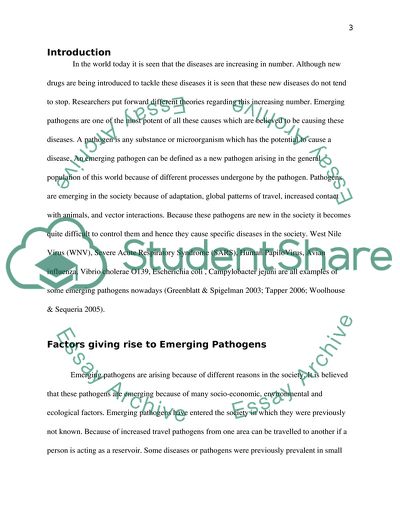Cite this document
(“Examples of Spread of Emerging Pathogens Term Paper”, n.d.)
Examples of Spread of Emerging Pathogens Term Paper. Retrieved from https://studentshare.org/biology/1743263-describe-and-discuss-what-is-meant-by-an-emerging-pathogen-factors-that-promote-their-appearance-and-measures-to-control-their-spread
Examples of Spread of Emerging Pathogens Term Paper. Retrieved from https://studentshare.org/biology/1743263-describe-and-discuss-what-is-meant-by-an-emerging-pathogen-factors-that-promote-their-appearance-and-measures-to-control-their-spread
(Examples of Spread of Emerging Pathogens Term Paper)
Examples of Spread of Emerging Pathogens Term Paper. https://studentshare.org/biology/1743263-describe-and-discuss-what-is-meant-by-an-emerging-pathogen-factors-that-promote-their-appearance-and-measures-to-control-their-spread.
Examples of Spread of Emerging Pathogens Term Paper. https://studentshare.org/biology/1743263-describe-and-discuss-what-is-meant-by-an-emerging-pathogen-factors-that-promote-their-appearance-and-measures-to-control-their-spread.
“Examples of Spread of Emerging Pathogens Term Paper”, n.d. https://studentshare.org/biology/1743263-describe-and-discuss-what-is-meant-by-an-emerging-pathogen-factors-that-promote-their-appearance-and-measures-to-control-their-spread.


